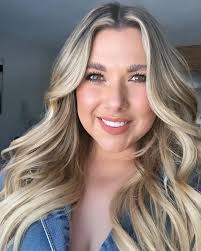Best Hair Extensions for Thin Hair: Your Complete Guide to Volume Without Damage
Best Hair Extensions for Thin Hair
Thin hair doesn't mean you're stuck with flat, lifeless styles forever. The right hair extensions for thin hair can add the volume and length you've been dreaming of - but only if you choose methods that won't stress your delicate strands or make your hair loss worse.
After years of working with clients dealing with hair thinning, I've learned that thin hair requires a completely different approach than thick hair. The wrong extension method can actually accelerate hair loss, while the right one can give you gorgeous volume without compromising your natural hair health. This guide breaks down exactly which hair extension methods work for thin hair and which ones you should avoid at all costs.
Quick Takeaways
- Best Methods: Tape-ins and hand-tied wefts - lightweight and gentle on fragile strands
- Avoid: Heavy machine wefts and tight sew-in methods that worsen hair loss
- Micro Options: K-tips and micro rings work for targeted volume with skilled application
- Clip-Ins: Safe for occasional wear, not daily use on thin hair
- Key Factor: Professional installation and color matching crucial for natural results
Do Hair Extensions Work for Thin Hair?

Hair extensions absolutely work for thin hair, but you need to be strategic about it. The key is choosing lightweight methods that distribute weight evenly and don't put stress on your natural hair. Thin hair is more fragile than thick hair, so heavy wefts or aggressive attachment methods can cause breakage and make thinning worse.
The best hair extensions for thin hair are those that add volume without adding bulk. You're not trying to create dramatically long hair - you're trying to create the appearance of fuller, healthier hair. This means focusing on strategic placement and using high-quality extensions that blend seamlessly with your natural texture.
Professional installation is crucial for thin hair. A skilled stylist knows how to section properly, avoid placing extensions too close to your hairline where thinning is most obvious, and use the right amount of hair to achieve fullness without overwhelming your natural strands.
Which Hair Extension Methods Work Best for Thin Hair?
The methods for thin hair are completely different from what works on thick, healthy hair. Tape-in extensions are often the best option for fine and thin hair because they're lightweight and distribute weight across flat sections. The adhesive is gentle, and when applied correctly, tape-ins lie flat against your scalp without creating bulk.
Hand-tied wefts are another excellent choice for thin hair. These lightweight wefts are sewn by hand, making them thinner and more flexible than machine wefts. A skilled stylist can attach hand-tied wefts using minimal beads or thread, reducing stress on your natural hair while adding significant volume.
Clip-in extensions work well for occasional wear, but they're not ideal for daily use on thin hair. The constant clipping and unclipping can stress fragile strands over time. However, clip-ins are perfect for special occasions when you want extra volume without the commitment of permanent extensions.
Are Micro Extensions Safe for Hair Thinning?
Micro extensions, including micro k-tip extensions and micro rings, can work for thin hair when applied correctly. The individual attachment points are smaller than traditional methods, which means less stress on each strand of your natural hair. Micro k-tips use tiny keratin bonds that are about half the size of regular K-tips.
However, micro extensions require exceptional skill to install properly on thin hair. The bonds must be placed strategically to avoid areas of significant thinning, and the stylist needs to use fewer extensions than they would on thick hair. Too many micro bonds can actually make thin hair look lumpy or unnatural.
The advantage of micro extensions is precision - your stylist can add volume exactly where you need it most. This is particularly helpful for women experiencing pattern hair loss, where thinning occurs in specific areas rather than all over.
How Do Hand-Tied Wefts Help with Hair Loss?
Hand-tied wefts are revolutionary for people dealing with hair thinning because they're incredibly lightweight and flexible. Unlike machine wefts that have thick, stiff seams, hand-tied wefts are sewn by hand, creating a thin, pliable weft that moves naturally with your hair.
The installation process for hand-tied wefts involves creating tiny horizontal sections and sewing the weft to your natural hair using a special thread. This method distributes weight evenly and doesn't rely on glue, heat, or metal components that could damage fragile strands.
Hand-tied wefts are also reusable, which makes them cost-effective for long-term wear. As your natural hair grows, your stylist can remove the wefts, trim them if needed, and reinstall them closer to your scalp. This means you're investing in a method that can grow with your hair and last for many months with proper care.
What Should You Avoid with Extensions for Thin or Fine Hair?
Heavy machine wefts are the worst choice for thin hair. These wefts have thick seams and require multiple beads or bonds to secure, which adds weight and bulk that thin hair simply can't support. The result is often flat roots with obvious attachment points that make your hair look even thinner.
Sew-in methods that require tight braiding should also be avoided. The tension from tight braids can cause traction alopecia, leading to permanent hair loss around your hairline and crown. If you're already dealing with thinning, the last thing you want is to make it worse with aggressive installation methods.
Fusion methods using large keratin bonds are too heavy for most thin hair. The heat required for application can also damage fragile strands. Stick to gentler methods that don't require high temperatures or create large, obvious attachment points.
How Do You Choose the Right Hair Extension for Your Hair Type?
Choosing the right hair extensions starts with an honest assessment of your hair's condition. If you're experiencing active hair loss, it's important to consult with both a dermatologist and an experienced stylist before getting extensions. Some types of hair loss require medical treatment before cosmetic solutions.
The amount of hair you have in different areas of your scalp determines which extension method will work best. If your hair is thin all over, hand-tied wefts or tape-ins provide the most natural-looking volume. If you have specific areas of thinning, micro extensions allow for targeted placement.
Your lifestyle also matters when choosing extensions. If you're active or frequently style your hair, you need a method that can handle regular washing and heat styling. Tape-in extensions and hand-tied wefts are both suitable for active lifestyles, while micro methods require more careful handling.
Can Clip-In Extensions Damage Thin Hair?
Clip-in extensions can be safe for thin hair when used occasionally, but daily use can cause stress on fragile strands. The clips create pressure points on your natural hair, and over time, this can lead to breakage at the attachment sites.
For thin hair, choose clip-ins with smaller wefts and fewer clips per piece. This distributes the weight more evenly and reduces stress on individual hair strands. Look for clips with silicone backing or cushioned clips that grip gently without pulling.
The key to using clip-ins safely on thin hair is moderation. Use them for special occasions, date nights, or events when you want extra volume, but give your hair regular breaks. Never sleep in clip-ins, and always remove them gently to avoid unnecessary pulling or breakage.
What Makes a Natural Look with Extensions for Thin Hair?
Achieving a natural look with extensions on thin hair requires perfect color matching and strategic placement. Because thin hair doesn't provide as much coverage as thick hair, any color mismatch or obvious attachment points will be immediately visible.
Professional color matching is essential. Your stylist should consider not just your base color, but also any highlights, lowlights, or natural variation in your hair. Sometimes a custom color blend is necessary to achieve seamless blending with thin hair.
Placement is equally important. Extensions should never be placed too close to your hairline or part, where thinning is most noticeable. The goal is to add volume in areas where you have enough natural hair to provide coverage for the attachment points.
How Often Do You Need Maintenance with Hair Extensions on Thin Hair?
Thin hair grows more slowly than thick hair, which means extensions often last longer between maintenance appointments. Tape-in extensions typically need to be moved every 6-8 weeks, while hand-tied wefts can often go 8-10 weeks between appointments.
However, thin hair also requires more careful monitoring. Your stylist needs to check that the extensions aren't causing any stress or damage to your natural hair. If you notice increased shedding or irritation, you may need more frequent check-ups.
Proper maintenance is crucial for protecting your hair health. This includes using sulfate-free shampoos, avoiding heat styling when possible, and following your stylist's care instructions exactly. Remember, the goal is to enhance your natural hair without compromising its health.
Ready to add volume to your thin hair safely? At Christian Michael Hair Extensions, we specialize in gentle methods perfect for delicate strands. Our premium tape-in extensions, lightweight hand-tied wefts, and strategic clip-in options are designed to give you gorgeous volume without compromising your hair health.
Browse our complete collection of extensions designed for thin and fine hair, all crafted with the quality and care your delicate strands deserve.

Tiffany Loe
Owner & Master Stylist
Hair extension expert and salon owner with a passion for helping stylists succeed. Tiffany has been transforming hair and building confidence for over 15 years.




